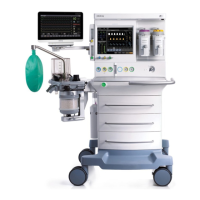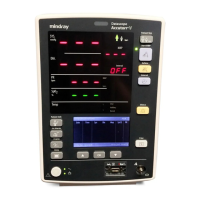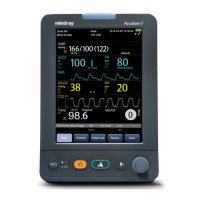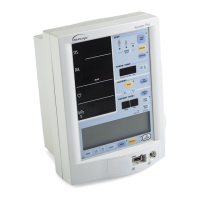Electromagnetic Compatibility
E - 6 Operator’s Manual of Anesthesia System
The essential performance verified during the immunity testing comprised of V
del
control accuracy,
V
del
monitoring accuracy, CO
2
monitoring accuracy, O
2
monitoring accuracy, airway pressure
monitoring accuracy, anesthetic gas monitoring accuracy, PEEP control accuracy and PEEP
monitoring accuracy.
RECOMMENDED SEPARATION DISTANCES BETWEEN PORTABLE AND MOBILE RF,
COMMUNICATIONS EQUIPMENT AND A8 ANESTHESIA SYSTEM
A8 anesthesia system is intended for use in an electromagnetic environment in which radiated RF
disturbance are controlled. The customer or the user of A8 anesthesia system can help prevent
electromagnetic interference by maintaining a minimum distance between portable and mobile RF
communications equipment (transmitters) (except as indicated the Table E-4) and A8 anesthesia system
as recommended below, according to the maximum output power of the communication equipment.
RATED MAXIMUM
OUTPUT POWER
OF TRANSMITTER
WATTS (W )
SEPARATION DISTANCE ACCORDING TO FREQUENCY OF TRANSMITTER
(m)
150 kHz to
80 MHz
80 MHz to
800 MHz
800 MHz to
2.7 GHz
0.01 0.12 0.12 0.23
0.1 0.38 0.38 0.73
1 1.2 1.2 2.3
10 3.8 3.8 7.3
100 12 12 23TABLE E-4
For transmitters at a maximum output power not listed above, the recommended separation distanced in
meters (m) can be determined using the equation applicable to the frequency of the transmitter, where P
is the maximum output power rating of the transmitter in watts (W) according to the transmitter
manufacturer.
NOTE: At 80 MHz and 800 MHz, the higher frequency range applies.
NOTE: These guidelines may not apply in all situations. Electromagnetic
propagation is affected by absorption and reflection from
structures, objects and people.
TABLE E-5 Recommended Separation Distances between Portable and Mobile RF, Communications
Equipment and A8 Anesthesia System
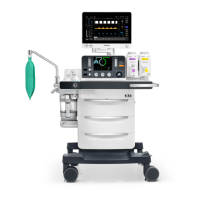
